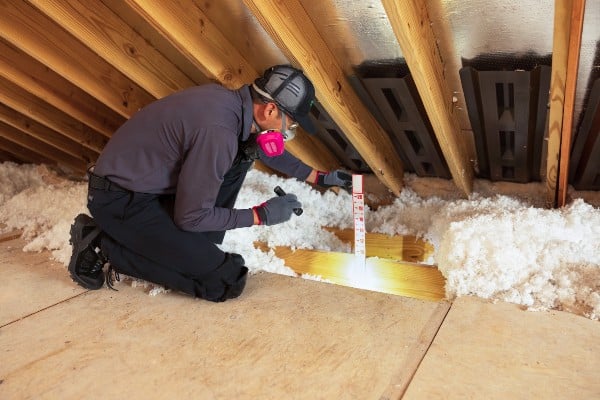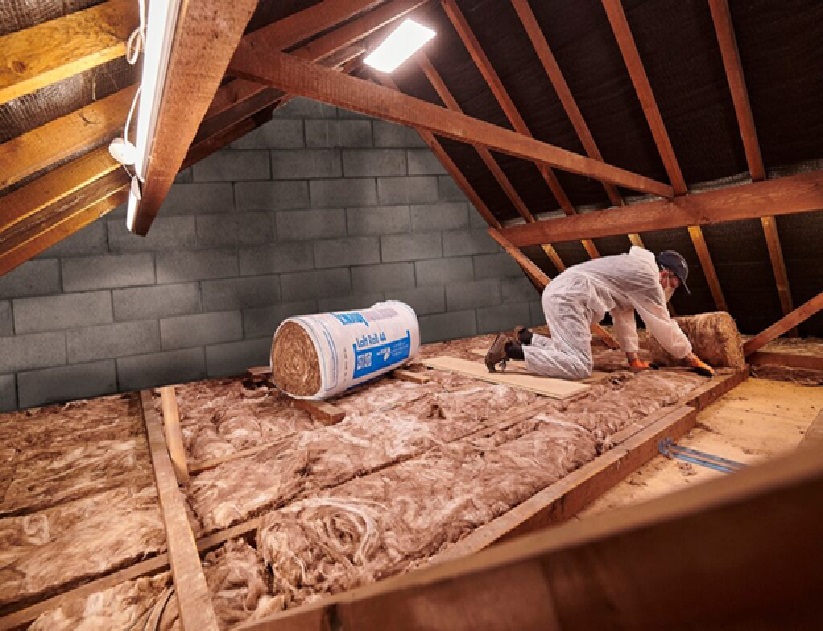Did you know that your home could be losing up to 20-30% of its heat through the roof if it’s not properly insulated? This heat loss is not only causing you to spend more on heating, but it also affects the comfort of your home. When a home lacks sufficient insulation, it becomes more susceptible to outdoor temperatures, as heat naturally flows from warmer areas to colder ones. This is the same reason we wear hats in winter to keep warm or in summer to stay cool. Even if your home has attic insulation, it’s worth checking if there is enough insulation and if it’s in good condition.
Why Is Attic Insulation Important?
Heat loss through the attic can significantly increase your energy bills, as your heating system works harder to maintain a comfortable temperature. Proper attic insulation helps reduce heat loss, keeping your home warmer in winter and cooler in summer. In addition to making your home more comfortable, attic insulation offers several other benefits:
- Lower Energy Bills: By reducing heat loss, insulation helps to keep the temperature inside your home stable, which in turn reduces the amount of energy needed to heat or cool your home.
- Environmental Benefits: Proper insulation reduces the amount of energy required for heating, which helps reduce greenhouse gas emissions and your carbon footprint.
- Increased Home Energy Rating: A well-insulated home typically has a higher energy rating, which is important if you plan to sell or rent your property. A higher energy rating, such as the Building Energy Rating (BER) in Ireland or the Energy Performance Certificate (EPC) in Northern Ireland, can increase the value of your home.
The Costs and Savings of Attic Insulation
Upgrading your attic insulation may seem like an investment, but the long-term savings are worth it. In the Republic of Ireland, the Sustainable Energy Authority of Ireland (SEAI) estimates that upgrading to the recommended 300mm depth of insulation in a four-bedroom detached home (150 square meters) using fiberglass insulation would cost between €700 and €1,000 (excluding grants). With annual energy costs of around €1,600, this upgrade could save you approximately €250 per year on heating bills.
In Northern Ireland, the recommended depth of insulation is 270mm. The Energy Saving Trust estimates that insulating a non-insulated attic in an average detached home would cost £395 and result in savings of £275 per year. If you’re upgrading from a 120mm depth to the recommended 270mm, the cost would be around £290, with savings of about £25 per year.
Attic Insulation Grants
If you’re in the Republic of Ireland, you may be eligible for grants of up to €1,500 for attic insulation through the SEAI. In Northern Ireland, NI Energy Advice offers free, independent advice about energy grants and other ways to reduce energy costs. Check with your local authorities to see if you qualify for financial assistance.
Types of Attic Insulation

The type of insulation that’s best for your attic depends on the structure of your home. Here are some options to consider:
- Ceiling Level Insulation: For homes with pitched roofs and an empty attic space, ceiling-level insulation is commonly used. This type involves layering quilted blankets in opposite directions to ensure maximum coverage. When choosing insulation materials, it’s important to ensure that they meet the necessary performance standards and building regulations. Your contractor can help guide you on the best option for your home.
- Rafter Level Insulation: If your attic has been converted into a living space, rafter-level insulation might be the right choice. This type of insulation is placed between the rafters of the roof, providing warmth but can be more expensive to install. You may want to combine both ceiling and rafter-level insulation for optimal results.
- Flat Roof Insulation: If your home has a flat roof, you can insulate it by adding an internal ceiling layer with insulation or by installing an external layer on the roof. Internal options often include plasterboard with insulation and a vapor control layer.
Top Tips for Insulating Your Attic
- Minimize Attic Storage: Attic insulation works best when it’s not compressed. Avoid storing heavy items in the attic, as they could reduce the effectiveness of the insulation. If you must store items, consider placing them above the insulation or in areas of the house with lower heating requirements, like bathrooms.
- Insulate Your Water Tank and Pipes: The temperature in your attic will drop after proper insulation, so it’s important to insulate your water tank and pipes to prevent them from freezing during cold weather. This also helps reduce heating costs for water.
- Ensure Proper Ventilation: Ventilation is key in an attic to prevent dampness and mold. Make sure that ventilation openings at the eaves of your home remain clear after installing insulation.
- Leave Room Around Recessed Lighting: Recessed lights or downlights should have enough space around them to allow heat to dissipate. This will prevent overheating, which can create a fire risk.
- Install a Permanent Walkway: For easy access to water tanks and storage, install a permanent walkway in your attic. This will allow you to maintain the insulation’s effectiveness while also ensuring safe access when needed.
- Don’t Forget the Attic Hatch: Insulating the attic hatch is often overlooked but is just as important as the rest of the attic. Make sure it is insulated to prevent heat from escaping.
Get an Insulation Quote Today
If you’re ready to upgrade your attic insulation, credit unions, in partnership with Energia and House 2 Home, offer a program called CU Greener Homes. Through their website, you can:
- Get a quote for insulating your home
- See what grants you may be eligible for
- Find out about financing options
- Understand how the work will impact your home’s energy efficiency
Upgrading your attic insulation can significantly improve the comfort of your home, reduce your energy bills, and contribute to a more sustainable future. Don’t wait—start planning your insulation upgrade today!

